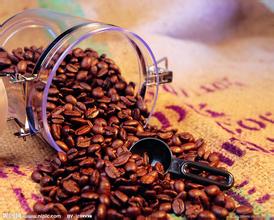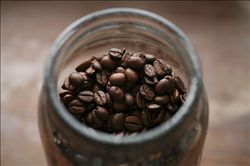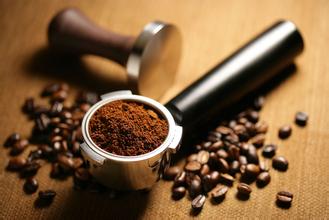Description of characteristics and flavor of Latin American coffee beans grinding scale variety producing area
Description of characteristics and flavor of Latin American coffee beans grinding scale variety producing area
There are three main ways to treat Brazilian manor coffee beans:
1. Washing treatment
2. Drying / natural treatment
3. Natural fermentation of mucous membrane.
Typically, washed coffee beans have the brightest, clearest taste and the most unique acidity of all Brazilian coffee beans, while medium-and upper-quality dried Brazilian coffee beans have fuller consistency and higher complexity, but lower acidity. The flavor of Brazilian coffee made by natural fermentation of mucous membrane is between the first two: the flavor is clear and fruity, the balance is good, and the acidity is delicate and rich.
While the latter is much stronger than the strong, the environmental requirements are not high, low altitude, cold resistance can even prevent their own virus, but the taste is more astringent, the caffeine content is also relatively high, twice as much as the former.
At present, most commercial coffees (such as instant) use Robbite beans, which are roasted for about eight minutes because of their low cost. All Starbucks coffee beans use Arabica beans, but the rest is not clear.
Central and South America is the largest coffee producing area in the world, and there are countless boutique coffee here. Take Colombia, Guatemala or Brazil as an example, good coffee is enough to make people dazzling. What is the resource advantage that makes Central and South America so good?
In 1721, French naval officer Gabriel Mathieu de Clieu went through difficulties and obstacles to bring the first coffee sapling from Africa to the Latin American island of Martinique, which was the origin of coffee cultivation in Latin America. Because France was under the Bourbon dynasty, Arabica coffee grown in Latin America had another name, bourbon, which is now famous in the coffee industry. Bourbon is now an important branch of coffee in Arabica. The overall flavor of Latin American coffee is famous for its balance, and all the flavors in Latin American coffee can be found in Latin American coffee. The widespread use of wet treatment of raw beans is also one of the characteristics of Latin American coffee. A good processing process also makes its beans larger and more uniform than African coffee, with a lower defect rate.
In addition, there are a small number of Jamaican coffee beans grown at low elevations, which can be slightly identified by their names, such as Blue Mountain Valley Coffee, Jamaican Alpine Coffee and so on.
Haiti Haiti
The typical flavor of Haitian coffee beans treated with water is sweet, soft and medium consistency, but it is often slightly moldy or overfermented due to mistakes in the treatment and drying process.
Columbia Colombia
In the Colombian coffee bean grading system, Supremo is the highest marketing grade, while Excelso is the smaller, more common grade. These large Colombian coffee beans have a balanced, acidity, unique flavor and relatively full consistency, sometimes with a hint of red wine or an admirable fruit flavor.

Important Notice :
前街咖啡 FrontStreet Coffee has moved to new addredd:
FrontStreet Coffee Address: 315,Donghua East Road,GuangZhou
Tel:020 38364473
- Prev

Introduction to the variety characteristics of rose summer coffee beans in Hope Manor of Colombia
Colombia Hope Manor Rose Summer Coffee Bean Variety characteristics Regional treatment method Taste many people equate Colombian coffee with high quality and good taste. The following is the editor's selection of several boutique coffee raw beans from Colombia for everyone to appreciate! Manor: Raminita model student country of origin: Colombia Colombia producing area: Nano Nar
- Next

Description of varieties and flavors of Ethiopian coffee beans taste treatment method grinding scale of varieties in producing areas
Ethiopian Coffee Bean species Flavor description Taste treatment Variety production area Grinding scale Ethiopia Sidamo is a single origin type grown in Arabica coffee in Sidamo Province, Ethiopia. Like coffee in most African countries, Ethiopian Sidamo is characterized by small gray beans, but characterized by its rich, spicy, wine or chocolate-like taste and flowers.
Related
- Detailed explanation of Jadeite planting Land in Panamanian Jadeite Manor introduction to the grading system of Jadeite competitive bidding, Red bid, Green bid and Rose Summer
- Story of Coffee planting in Brenka region of Costa Rica Stonehenge Manor anaerobic heavy honey treatment of flavor mouth
- What's on the barrel of Blue Mountain Coffee beans?
- Can American coffee also pull flowers? How to use hot American style to pull out a good-looking pattern?
- Can you make a cold extract with coffee beans? What is the right proportion for cold-extracted coffee formula?
- Indonesian PWN Gold Mandrine Coffee Origin Features Flavor How to Chong? Mandolin coffee is American.
- A brief introduction to the flavor characteristics of Brazilian yellow bourbon coffee beans
- What is the effect of different water quality on the flavor of cold-extracted coffee? What kind of water is best for brewing coffee?
- Why do you think of Rose Summer whenever you mention Panamanian coffee?
- Introduction to the characteristics of authentic blue mountain coffee bean producing areas? What is the CIB Coffee Authority in Jamaica?

